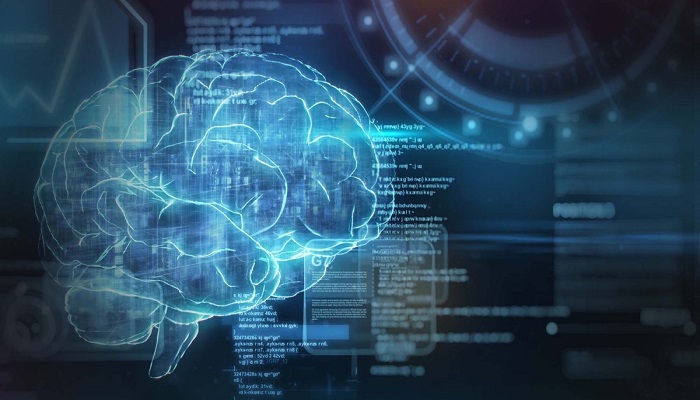In its Blueprint for an AI Bill of Rights, the White House Office of Science and Technology Policy outlined five guiding principles for the design, usage, and deployment of automated systems.
The Blueprint for an AI Bill of Rights is a framework that sets safeguards on new technology to strengthen civil rights, civil liberties, and privacy, and to ensure equal opportunities to ensure access to necessary resources and services. It is designed to safeguard the American public in the age of artificial intelligence.
Healthcare AI is mentioned before finance, community security, social services, state assistance, and commodities and services. These instruments are all too frequently used to limit prospects and deny us access to essential resources or services. Systems designed to assist with patient care have been shown to be hazardous, ineffective, or prejudiced in America and around the world so says the White House.
According to the announcement, researchers, engineers, advocates, journalists, and policymakers produced the blueprint and its companion manual in response to public anxiety around the use of AI to make judgments. The From Principles to Practice manual provides thorough instructions for putting the upcoming theory into action in the technological design procedure:
- Effective And Secure Systems
- Algorithmic Protection Against Discrimination
- Data Protection
- Notice And Justification
- Human Fallbacks, Considerations, And Options
There are references to President Joe Biden’s statements and executive orders all through, including those on progressing racial fairness for the underserved, the Supreme Court’s decision to overturn Roe v. Wade, and more. Each concept is described so that automated systems can meaningfully impact the public’s rights, opportunities, or access to critical needs.
The paper contains footnotes to big data publications that cover a variety of topics, such as egregious judicial mistakes based on defective face recognition matches and racial bias, educational redlining, biassed employment algorithms and labour recruitment tools, flawed population health AI, and more.
In order to create secure, reliable systems, the blueprint instructs AI engineers to consult with a variety of groups, stakeholders, and subject matter experts.
A specific prescription for what should be expected of automated systems states that in order to guarantee that an automation process is secure and effective, it should incorporate protections to safeguard the general public from damage in an assertive and continuous manner; avoid use of data improper for or unimportant to the task at hand, including reutilization that might cause cumulative harm; and demonstrate the safety and effectiveness of the system.
The blueprint also outlines the duties of AI system owners with regard to governance, risk detection and mitigation, continued human-led monitoring for the duration of installed automated systems, and consultation.
According to risk identification procedures, those with this responsibility should be made aware of any use cases that could meaningfully affect people’s rights, opportunities, or access, and when they are, responsibility should rest with those high enough in the organisation that decisions about resources, mitigation, incident response, and prospective rollback can be made immediately, with adequate consideration given to risk mitigation objectives against competitive advantages.
Patient privacy rights would undoubtedly be affected, and the roadmap calls for stronger protections and limitations for data across sensitive fields, like healthcare. The practise section mandates privacy by default and design in situations where, to prevent mission creep, data collection should have a limited scope and precise, defined aims. It should be decided that the anticipated data gathering is strictly required to achieve the stated aims and should be kept to a minimum.
Furthermore, according to the blueprint, data gathered based on these identified aims and for a specific context should not be utilised in a different context without screening for additional privacy risks and applying suitable measures to mitigate them, which may include express consent.
The organisation in charge of developing the system shall respond to inquiries from members of the public about how their data is used in the system, including a report on the data it has gathered or kept about them and a description of how it is used. The stakes are high when analytics are implemented in healthcare, which shakes public confidence. For example, AI products and services have the power to choose who receives what type of medical care and when.
Concerns about these models’ potential consequences due to algorithmic bias based on factors like race, gender, and other characteristics have led to initiatives to advance evidence-based AI applications in the healthcare industry.
Sanjiv M. Narayan, MD, co-director, Stanford Arrhythmia Center, director of its atrial fibrillation programme, and professor of medicine at Stanford University School of Medicine, contends that all data is skewed. There are several ways to remove bias in AI, but none of them is perfect. These include methods for developing applications that are largely bias-free, for gathering data in a largely objective manner, for creating mathematical algorithms that minimise bias, etc
According to USA Today, Biden was present in New York this week when IBM revealed $20 billion in funding for studies, development, and manufacturing, including AI and quantum computing. Readers of the Wall Street Journal will note that many business leaders have expressed concern that the White House’s blueprint for an AI Bill of Rights will result in regulations that stifle development.
The White House stated in the section of the blueprint titled Extra Protections for Data Related to Sensitive Domains that tracking and monitoring technologies, personal tracking devices, and their extensive data footprints are being used and misappropriated more than ever before; as a result, the protections offered by current legal guidelines may be inadequate.
The American public wants guarantees that information pertaining to such sensitive fields is safeguarded, handled appropriately, and only in circumstances with definite advantages for the person or society.


















